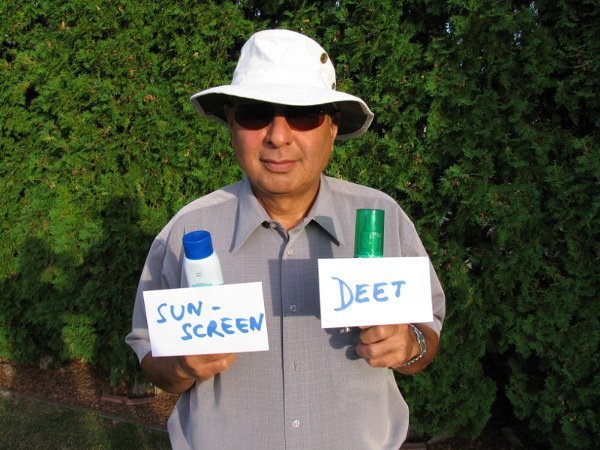It is not difficult to meditate. But it is difficult is to find time to meditate. There are easy ways to meditate and there are elaborate ways to meditate. There are numerous books out there where you can learn different techniques. Today’s column is just an introduction.
Meditation should be effortless. It requires concentration to a visual image, a repeated word or a body sensation such as breathing.
One easy method I have found useful is called walking meditation. I learnt about this at a medical conference. You have to walk clockwise around a room while holding your one hand closed in a fist, while the other hand grasps or covers the fist. You take each step after a full breath.
You can do this during a lunch hour at work or at home when you find 10 minutes or more. Do not worry if your co-workers think you are crazy walking in a circle in your boss’s office. They have probably seen too many movies where they see people walking in circles in mental institutions. We do not believe in stereotyping and profiling.
Walking meditation is a form of meditation in action. The difference between walking meditation and sitting meditation is that our eyes are open, we do not withdraw our attention from the outside world, it is easier to meditate and fit into our schedule and perhaps we are more easily aware of our bodies when we are walking than sitting. The relaxation experienced while walking is more intense than sitting.
Some researchers have come up with an idea of combining relaxation and exercise into one activity. Such as aerobic exercise. It was found that compared with a control group, volunteers who focused their thoughts on a word or phrase while riding a stationary bike had an 11 per cent lower metabolic rate. An anxious, type A individual may do better with this technique because it gives an active mind something to focus on.
Drs. Martin and Marion Jerry’s book (Sutras of the Inner Teacher – The Yoga of the Centre of Consciousness, 2M Communications, Canmore, Canada) discusses in great detail the role and technique of yoga and meditation in the Himalayan Tradition. A serious student of yoga and meditation should read this well researched book.
Other techniques include Zen technique that requires sitting for hours in a position which can be painful and tiring. According to Dictionary.com, Zen is a Mahayana movement, introduced into China in the 6th century a.d. and into Japan in the 12th century, that emphasizes enlightenment for the student by the most direct possible means, accepting formal studies and observances only when they form part of such means. Enlightenment can be attained through meditation, self-contemplation, and intuition rather than through faith and devotion.
The Transcendental Meditation (TM) technique is a form of mantra meditation introduced in India in 1955 by Maharishi Mahesh Yogi (1917–2008). His famous disciples were Beatles. Meditation involves the use of a sound or mantra and is practiced for 15–20 minutes twice a day, while sitting comfortably with closed eyes.
There are many more techniques. If you are a busy person, and most people are, just find a quiet room, close your eyes, pick a word and say it again and again. You can use a rosary to help you concentrate. Or say the word when you breathe in or out. Snoring does not count. But I consider snoring as a kind of meditation after a hard day’s work. And my wife agrees with that as long as she does not have to hear the noise.
So, find a technique which works for you in your busy schedule, name it after somebody you like and enjoy the peace and tranquility. Next week, we look at the medical benefits of meditation.
Start reading the preview of my book A Doctor's Journey for free on Amazon. Available on Kindle for $2.99!
